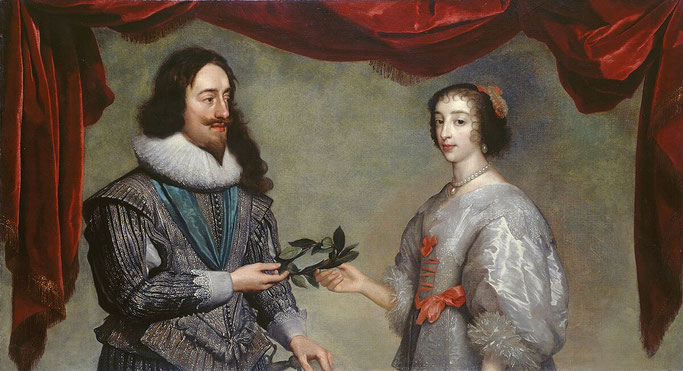From Tudor-Era Renaissance to Baroque Dress in the Gowns of a Queen

The early 1600s were a time of social, political and cultural change. These circumstances are reflected in dress, and we can read these especially well when comparing the portraits of Anne of Denmark from c. 1600 and from 1614.
From high hair to round and wide, from a square neckline to a low-cut round bodice, from a pleated ruff to a round gauze collar - the times were changing, and with it royal dress. There are subtle changes away from the Elizabethan styles towards the Baroque legible in Anne’s attire, which we are going to trace.
Anne of Denmark (1574-1619) was the daughter of King Frederick II of Denmark and his wife, Sophie of Mecklenburg-Güstrow. Aged only fourteen, she was sent to Scotland to marry James Stuart, son of Mary Queen of Scots. James Stuart, as monarch James VI and I, united Scotland, England and Ireland under his rulership after the death of Elizabeth I, although these remained sovereign states.
After the death of Elizabeth I in 1603 and their ascent to the English and Irish thrones, James and Anne had to make the new union of states work. They had to wrestle factions, powerful families, adversaries and unruly courtiers into shape. They had to assert power, and create new imagery which honoured that which had been but also provided a toolkit for the future. They had to both uphold traditions, and find new paths - in politics and visually. Henry VII, father of Henry VIII, had faced the same problem when ascending to the throne at the end of the Wars of the Roses. He had created a true Renaissance court, spending vast sums on attire and culture. James and Anne also had to craft a new identity for their court.
In young Anne, James had a skilled and strong-willed consort. In contemporary and later sources the portrayal of Anne is faceted; ranging from characterisations of her as a woman of frivolous vanity to respectful words for her strength and personal qualities (as many consorts and women in positions of power have faced across time). Anne was fully aware of the impact of actively shaping her image, and she deployed portraiture as a tool with the skill of a branding expert. In a pre-photography world, portraiture (especially of monarchs) was the way to represent oneself as a person, monarch and representative of the public.
In the c. 1600 portrait, Anne is portrayed rather like a queen or aristocratic woman of her day, dressed incredibly richly but besides her unique facial features without items of personal identity. Gems are sewn into her red gown, it is embroidered with genuine gold and silver threads. The stomacher has beautiful blackwork embroidery in the pattern of branches stitched in black silk thread. The square neckline was a common feature of Tudor and Elizabethan (court) dress and although it lasted well into the 1600s, it was on the descent during Anne’s later years of queenship. She positions her image here on the forefront of dress style. As a queen, she was a shaper of fashion, but also herself influenced by her day and age and having to function as a signpost for her splendour of her husband’s monarchy.
In the 1614 portrait, Anne’s gown is also fitted and padded, giving it an almost armour-like quality. With it, she here proudly wears a crowned brooch in the shape of a letter C set with diamonds in gold. It is pinned in her hair and symbolises her connection to her brother and heir to the Danish throne, Christian. She positioned herself with this as a woman of royal lineage in her own right, possibly partially influenced by increasing differences and marriage troubles with her husband. The C is accompanied by a crowned letter S brooch, for Stuart. With this mode of portrayal, she reminded everybody of what she had brought to the Stuart table in her royal Danish lineage.
Her hair is still carefully coiffured, arranged over a wire or padded frame. Yet overall there is a marked change. The white feather plume placed in her hair which would have bobbed with every step or gust of wind. The pearls worn simply on a contrasting black string are expressive. Lace, even more valuable than the diamonds, is draped low along neckline and décolletage.
In Anne’s garments, there are already many elements legible which are also seen later in Baroque dress styles - such as the lace, the curved lines, and the generally somewhat softer hair and overall look. Taking a look forwards in time to Queen Henrietta Maria (Queen of England, Scotland and Ireland 1625-1649), the wide hair, the lace collar laying over the shoulders, and the luscious light silk of Anne’s 1614 can be seen as a herald or predecessor to Henrietta. Here is a portrait of Charles I and Henrietta Maria, c. 1631, by Daniël Mijtens for comparison:

Anne’s day and dress shows a change from the Renaissance to a new era and remind us that dress is always reflective of the wider circumstances of its time, and to pay close attention to the self-presentation of public figures.
Images of portraits: public domain, via Wikimedia Commons
